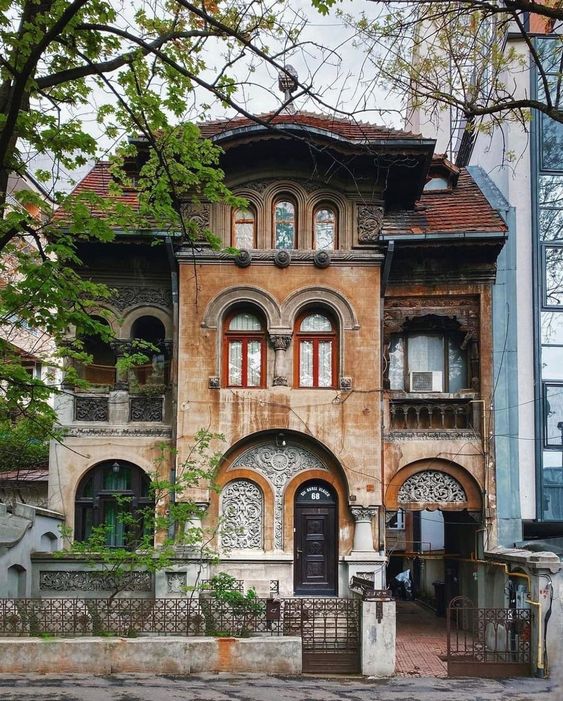#16552. Elegant Neo-Romanesque Mansion with Richly Decorated Facade
Before us stands an impressive example of Neo-Romanesque architecture with distinct Art Nouveau elements. This urban mansion showcases an exquisite facade design, rich in architectural details, creating a sense of historical depth and artistic value.
The facade is rendered in yellowish-beige tones and stands out against the modern building to the right. The composition is three-tiered, with pronounced symmetry and a central entrance. Particularly noteworthy are the arched elements that repeat across all floors, creating a rhythmic visual pattern. The upper level features delicate triple arched windows with decorative framing, while the middle level presents double arched constructions with wooden frames.
The entrance is formed by a semi-circular arch with rich carved decorations and a massive dark door, lending nobility and significance to the building. Flanking the central entrance are decorative grilles with intricate ornaments, emphasizing the refinement of the composition. The texture of brickwork and plaster creates an interesting play of light and shadow on the facade.
The roof is made of terracotta tiles with a characteristic protruding cornice and decorative elements underneath. The greenery framing the building organically complements the architectural composition, softening the strictness of the lines.
When designing modern facades, several techniques used in this historical building can be adopted: symmetrical composition, rhythmic repetition of arched elements, use of decorative details to accentuate entrances and window openings, and harmonious combination of different textures and materials.
